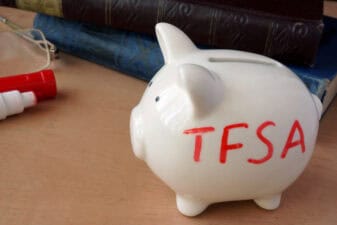Making annual contributions towards the Registered Retirement Savings Plan (RRSP) can lower your tax bill significantly. For instance, you can allocate up to 18% of your taxable income or a maximum of $32,490 toward the registered account in 2024. So, if you earn $75,000 annually, your RRSP contributions should be limited to $13,500, reducing your tax bill to $61,500.
As the RRSP is a retirement account, it should be used to hold a portfolio of blue-chip dividend stocks that can help you generate inflation-beating returns over time. In addition to a steady stream of passive income, investors with exposure to the best TSX dividend stocks are positioned to benefit from capital gains as well. One such magnificent high-yield stock RRSP investors can consider buying in 2024 is Enbridge (TSX:ENB).
In the last two decades, ENB stock has returned 290% to shareholders. But if we adjust for dividend reinvestments, cumulative returns are much higher at 850%. Comparatively, the TSX index has returned 371% to shareholders in dividend-adjusted gains since June 2004.
Is Enbridge stock still a good buy in 2024?
Valued at $102 billion by market cap, Enbridge is among the largest companies on the TSX. It has four primary business segments that include the following:
- Liquid Pipelines: The segment operates pipelines and terminals, transporting various grades of crude oil and other liquid hydrocarbons in Canada and the U.S.
- Gas Transmission and Midstream: It invests in natural gas pipelines and gathering and processing facilities.
- Gas Distribution and Storage: It is involved in natural gas utility operations, serving residential, commercial, and industrial customers.
- Renewable Power: The segment operates power-generating assets, including wind, solar, and geothermal, as well as transmission assets.
Its widening and diversified asset base has allowed Enbridge to earn a stable stream of cash flows across market cycles. Moreover, the company’s organic investments and accretive acquisitions have allowed it to increase dividends by 10% annually on average since 1995.
While Enbridge is unlikely to replicate its historical dividend hikes, it increased its EBITDA (earnings before interest, tax, depreciation, and amortization) and distributable cash flow per share by 8% year over year in the first quarter (Q1) of 2024, which suggests its growth story is far from over.
What is the target price for ENB stock?
A key reason for Enbridge’s stellar dividend growth is its robust business model. For example, 98% of Enbridge’s cash flows are contracted, while 80% of its EBITDA has inflation protections. Further, 95% of its customers enjoy an investment grade rating, and just 5% of Enbridge’s total debt portfolio is exposed to floating rates.
Enbridge currently pays shareholders an annual dividend of $3.66 per share, translating to a forward yield of 7.6%. Last year, Enbridge announced its plan to acquire three natural gas utilities from Dominion Energy for $19 billion. While the acquisition will be funded by cash and debt, it should help Enbridge drive future cash flows higher and support dividend hikes going forward.
Priced at 16 times forward earnings, ENB stock is reasonably valued and trades at a 14% discount to consensus price target estimates. After adjusting for dividends, total returns may be closer to 21.5%.








